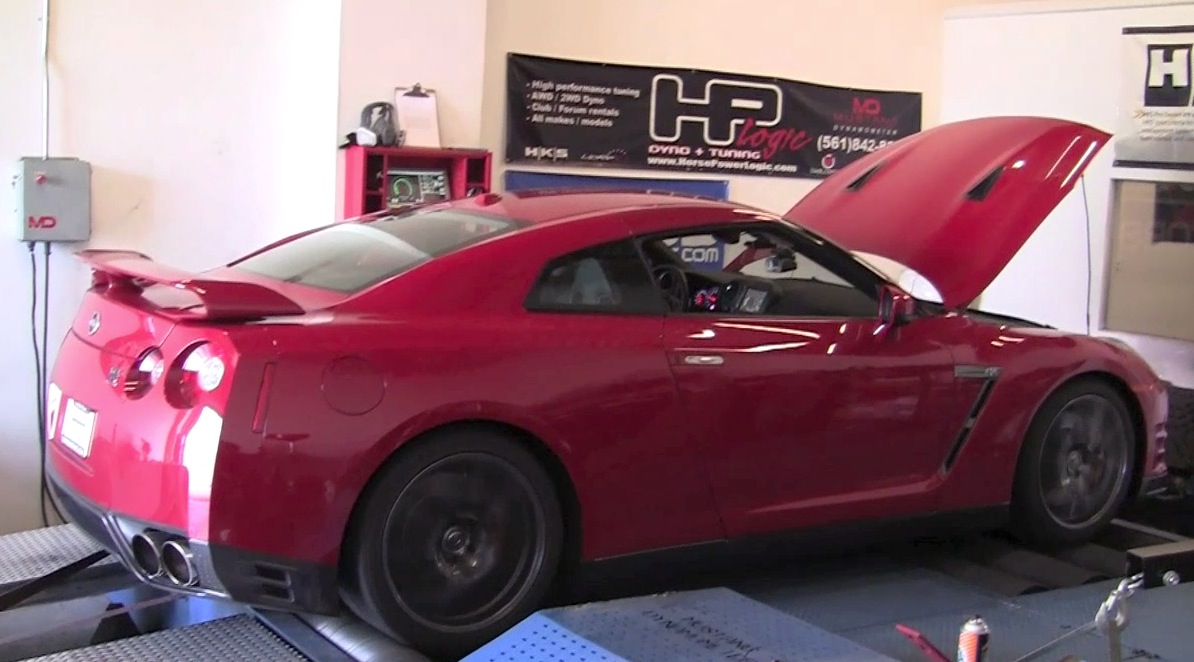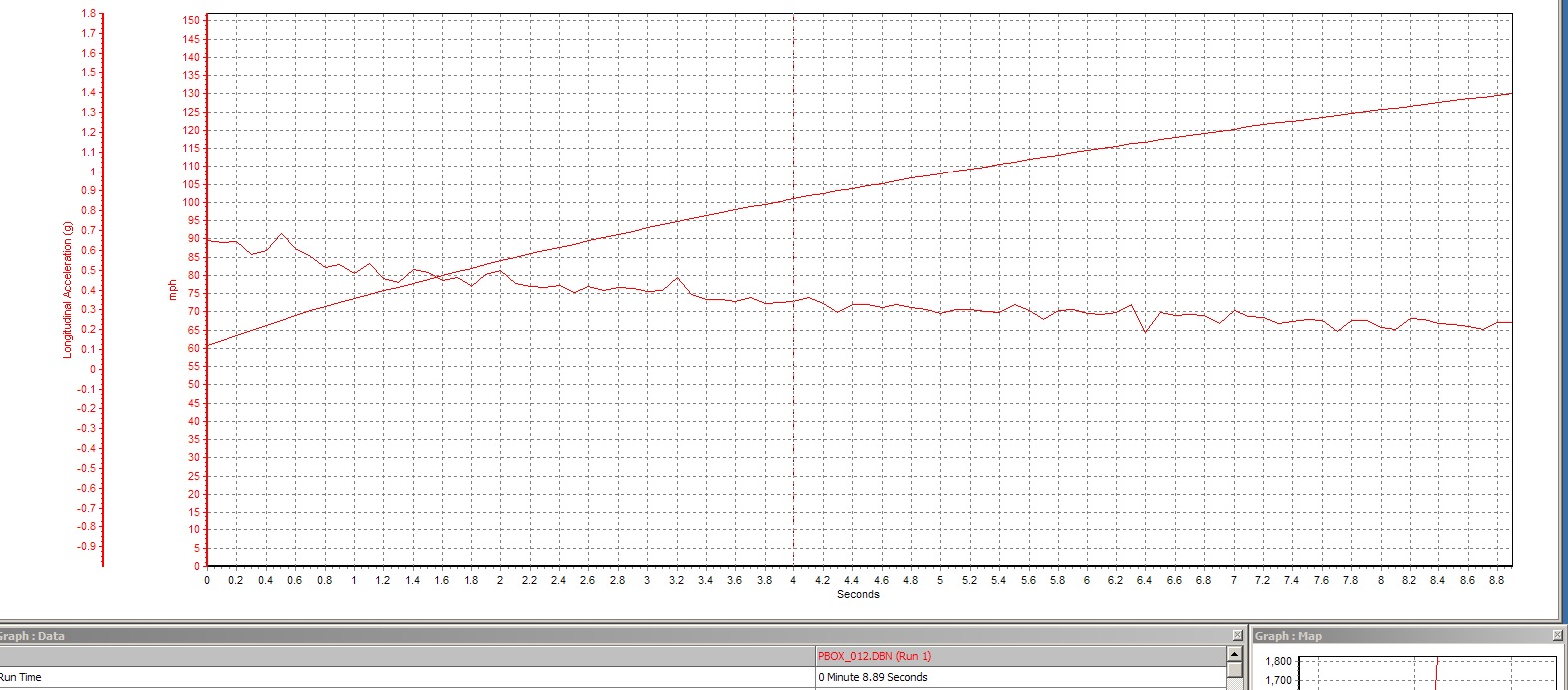2013 Nissan GT-R Dyno and Drag Racing Tests
March 22nd, 2012 We had some time with the brand new 2013 Nissan GT-R and ran it through some dyno and drag racing tests to get some real world data Nissan’s latest version of it’s flagship car. For 2013 the Nissan GT-R was updated a host of minor enhancements. Power from the 3.8L V6 Twin Turbo was increased 15HP and 15 ft-lbs of torque over the 2012 model with a total of 545 HP and 463 ft-lbs of torque. Additional features for the 2013 model year include upgrades to the DCT transmission as well as suspension. While the list of 2013 changes is small the bump in price was huge, increasing over $6,000 from the 2012. Our test car was the Solid Red Premium Model with a MSRP of $98,100.
We had some time with the brand new 2013 Nissan GT-R and ran it through some dyno and drag racing tests to get some real world data Nissan’s latest version of it’s flagship car. For 2013 the Nissan GT-R was updated a host of minor enhancements. Power from the 3.8L V6 Twin Turbo was increased 15HP and 15 ft-lbs of torque over the 2012 model with a total of 545 HP and 463 ft-lbs of torque. Additional features for the 2013 model year include upgrades to the DCT transmission as well as suspension. While the list of 2013 changes is small the bump in price was huge, increasing over $6,000 from the 2012. Our test car was the Solid Red Premium Model with a MSRP of $98,100.
 First stop was over at at HP Logic in West Palm Beach, FL to get some baseline dyno numbers for the 2013 Nissan GT-R and compare it against the 2012 we tested last year. The 2013 Nissan GT-R showed a very modest increase in power with 480 horsepower and 430 ft-lbs of torque at all 4 wheels. This is a peak of 6 horsepower and 10 ft-lbs of torque increase over the 2012 GT-R we tested on the same dyno last year. There are larger increases in power and torque for the 2013 over the 2012 in the lower RPM’s as shown in the graph which contribute to the 2013’s harder launches and quicker 0-60 MPH times shown later.
First stop was over at at HP Logic in West Palm Beach, FL to get some baseline dyno numbers for the 2013 Nissan GT-R and compare it against the 2012 we tested last year. The 2013 Nissan GT-R showed a very modest increase in power with 480 horsepower and 430 ft-lbs of torque at all 4 wheels. This is a peak of 6 horsepower and 10 ft-lbs of torque increase over the 2012 GT-R we tested on the same dyno last year. There are larger increases in power and torque for the 2013 over the 2012 in the lower RPM’s as shown in the graph which contribute to the 2013’s harder launches and quicker 0-60 MPH times shown later.
After the dyno session we headed a few miles north to Palm Beach International Raceway (PBIR) for their Test and Tune night where the weather was in the high 70’s with a Density Altitude (DA) hovering around 1,300 feet. For the first run down the track we engaged the R-Start Mode (AKA Launch Control) and left the transmission in Auto Shifting Mode. The car came off the line brutally hard with zero wheel spin and recorded a 60′ time of 1.61 seconds, but for some reason the car did not make the 1st to 2nd gear shift and the run was botched. We immediately brought the car back to the line and used Manual Shifting Mode and the same thing happened, after pulling an even better 60′ time of 1.60, when we pulled the (+) paddle at 6,900 RPM, the car hesitated on the shift.

Not sure what to do next, we let the car cool down and power cycled it a few times before trying again. We then tried Auto Shifting Mode again, and this time, as well as the rest of the night, the car shifted perfectly in both Auto and Manual modes. This run netted a slower 60′ time of 1.64 and finished the 1/4 mile at 11.01 @ 123.18 MPH. As the night went on and more cars started running the track prep deteriorated and the car started to slightly spin on the launch, thereby slowing down the times a bit from 11.04 to 11.1 with the highest trap speed coming in at 123.94 MPH. The 2012 we tested last year ran 11.07 @ 124.45 with a 1.64 60′ as well in slightly better weather with a DA of 1117 feet.
The Racelogic Performancebox (VBOX) recorded a 0-60 MPH time of just 2.78 seconds and a 60-130 MPH time of 9.3 seconds. Last year the 2012 GT-R we tested ran 0-60 MPH in 2.9 seconds and a 60-130 MPH time of 9.4 seconds.
While we didn’t get the 2013 Nissan GT-R to break into the 10’s we’re very confident that car will dip into the high 10’s with better weather or one those hard launches we had at the beginning of the night with the car shifting properly. We’ll be trying again soon so keep checking back.
UPDATE (4-26-2012): We ran the car again running a 10.87 @ 125.2 MPH.
Browse through the timeslips, pictures, dyno graphs and videos below.
2013 vs 2012 Nissan GT-R Dyno Comparison
2013 Nissan GT-R Dyno Video
2013 Nissan GT-R Drag Racing Video
2013 Nissan GT-R 60-130 Graph




